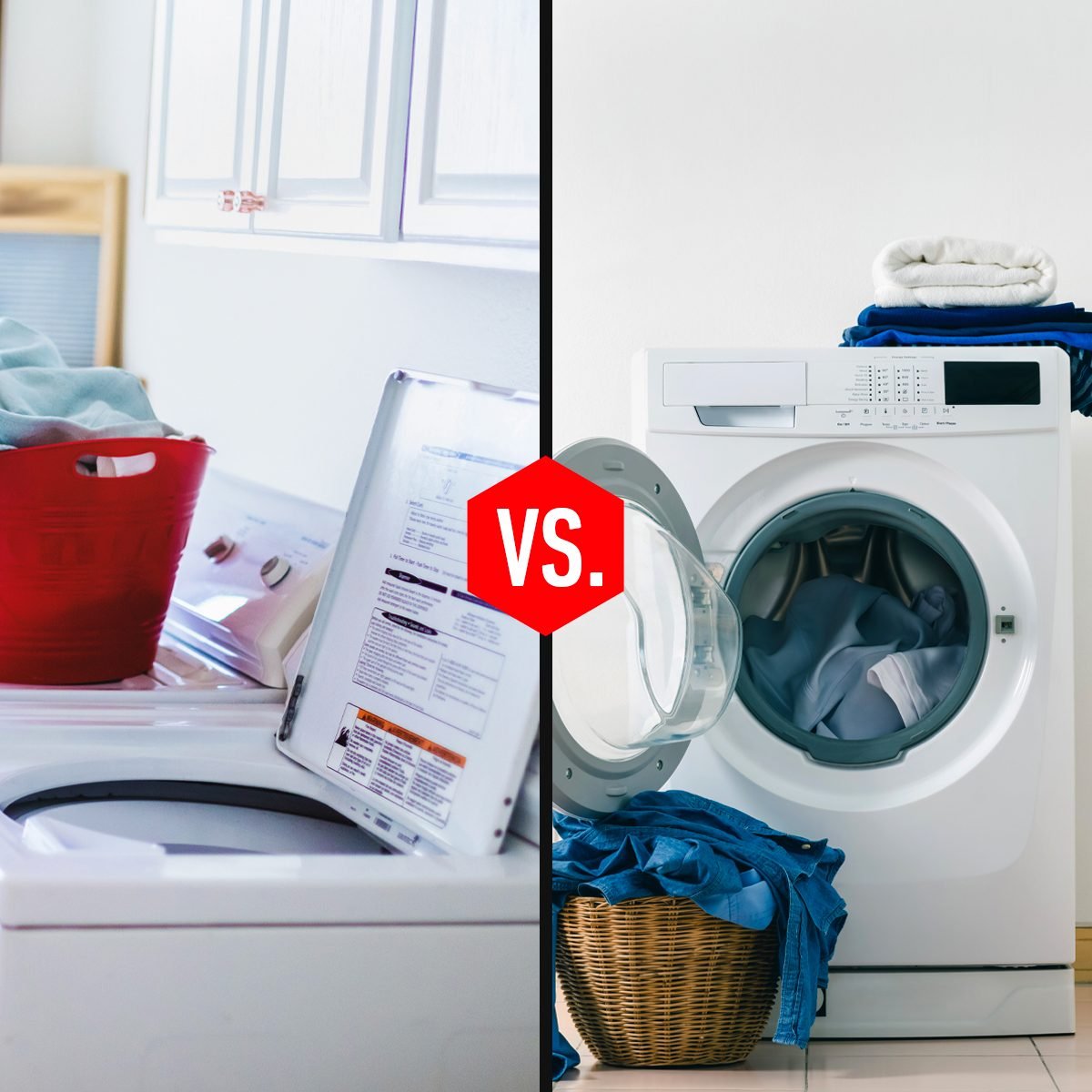Yankees vs. Red Sox. Ali vs. Frazier. Top loader vs. front loader?
Great rivalries get people amped up, and the washing machine debate is no exception. For decades, top-loading machines ruled the home market. To use a front loader, you had to go to a laundromat. But after a fitful reintroduction in the late 1990s, front loaders for home use have gained steam in recent years.
Passions run high. Perhaps you’ve owned both, but you like the energy efficiency of front loaders. Maybe top-loading washers have always worked for you, so why fix what isn’t broken?
Where do you come down? We want to know! Check out the pros and cons of each, then vote in our poll.
Top-Loading Washing Machines Are Better
If you were born before the year 2000 and had a washing machine in your house, it was most likely a top loader. Even today, traditional and high efficiency (HE) top loaders are the most popular style of washer.
Familiar, reliable and affordable, top-loading washing machines maintain a stronghold on U.S. consumers. Here are some reasons why:
Shorter cycles
Traditional agitating top loaders generally have shorter cycles than front-loading machines, according to Consumer Reports. The normal cycle can last as little as 35 minutes, the express cycle even less. That’s plenty of time to get your clothes clean, says Patric Richardson, the Laundry Evangelist and author of Laundry Love: Finding Joy in a Common Chore.
As long as you use warm water and don’t overdo the detergent, Richardson says “the 30-minute cycle is fine, no matter how dirty your clothes are.” In comparison, the normal setting on a front-loading washing machine can last more than an hour.
Easy to load
Who hasn’t started the wash and then found a stray sock or two? Opening the lid and tossing in clothes, even after the wash starts, is easy with a top loader. Front loaders have locking front doors to keep water in once the cycle starts, so you must stop the washer to add any forgotten items.
Less maintenance
Front loading washing machines are notorious for harboring mold when water gets trapped in the door gasket. Top loaders don’t have that problem. Water doesn’t come up to the lid at all, so there’s no need for a watertight seal. That means air circulates more freely, even if you leave the lid closed between loads.
Front-Loading Washing Machines Are Better
The first automatic washing machine, introduced in 1937, was a front loader, and they’ve been used in commercial laundries and laundromats ever since. Here’s why they work for the home market, too:
Energy efficient
“Front loaders use less water than top loaders,” says Ron Shimek, president of Mr. Appliance, a Neighborly Company. Specifically, front-loaders with an Energy Star certification use 50 percent less water than traditional top loaders. That translates to less energy to heat the water and agitate your clothes, making front loaders better for the environment and your energy bill.
Front loaders get the nod for efficiency even with longer cycles, according to Energy Star and Consumer Reports. Not only do they use less water and less energy, they spin faster and extract more water, cutting down on drying time.
Gentler on clothes
Front loaders clean your clothes by tumbling action and gravity rather than an internal agitator, i.e. the piece that sticks up in the middle of traditional top loader. This means the washer is less harsh on fabrics, according to testers at Consumer Reports. This is true even when compared to HE top loaders, which use an impeller instead of an agitator.
Space saving
Washing machines are big. Couple them with a dryer and we’re talking major real estate in your home. Front loaders have the advantage of being stackable as-is, although you might have to buy a stacking kit; check compatibility with your brand before purchasing. This means if you move to a smaller place, you don’t have to purchase a new washer and dryer.
Top loaders come in stackable versions, but Shimek says “in most cases, the top-loading machines are of a smaller capacity.”
A Top Loader Is Better If You…
- Like to presoak. Top-loading machines let you fill the washer and give your dirty clothes a good soak.
- Have difficulty bending and reaching into the drum of a front-loading machine, which is much lower to the ground.
- Are a traditionalist. Many people like top loaders because that’s what they’ve always used.
- Don’t want to worry about mold. Mold can grow in any washer, but it’s less likely with a top loader.
A Front Loader is Better If You…
- Wash a lot of large items. Front loaders can handle bulky things like comforters with ease because there’s no central agitator.
- Have accessibility needs. Front-loading machines give wheelchair users and smaller people easier access to the door, drum and controls.
- Are motivated by climate concerns. Front loaders use much less water and receive better Energy Star ratings.
- Live in an apartment. While top loaders come in small sizes, front loaders can be stacked without sacrificing capacity.
The Better Washing Machine Is?
So, what’s your verdict? Are you switching loyalties or more secure in your choice than ever?





















